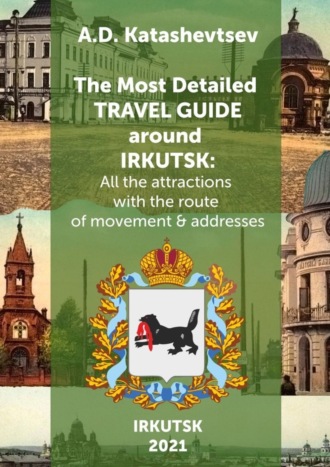The Most Detailed Travel Guide around Irkutsk. All the attractions with the route of movement & addresses

Полная версия
The Most Detailed Travel Guide around Irkutsk. All the attractions with the route of movement & addresses
Жанр: книги о путешествияхдокументальная литератураисторическая научная и учебная литератураобщая историядругие справочникисерьезное чтениеоб истории серьезно
Язык: Английский
Год издания: 2022
Добавлена:
Настройки чтения
Размер шрифта
Высота строк
Поля
Конец ознакомительного фрагмента
Купить и скачать всю книгу
